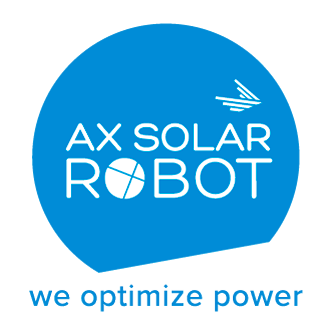Before going into the details of how to calculate the output of a photovoltaic solar panel, let’s first look at the difference between a module’s power output and the actual output that results from its connection to the grid.
Also, what factors influence photovoltaic production?
-module orientation and inclination (see section V): for a given irradiance, a module that is incorrectly oriented and/or inclined will produce less than an equivalent module that is better positioned.
-changes in irradiance, i.e. the amount of energy received per unit area: from one day to the next, and cumulatively from one year to the next, sunshine conditions vary, directly impacting photovoltaic production, both upwards and downwards.
-outdoor temperature: above 25°C, solar modules lose conversion efficiency (this is the concept of electrical efficiency, which is the ratio of the amount of energy received via the sun’s rays to the amount of energy produced in electricity – the latest monocrystalline modules boast efficiencies of around 23%).
-module fouling, which can have two types of effect on photovoltaic electricity production, the first being a drop in output due to a reduced collector surface and therefore a lower conversion rate. Depending on the type of installation, climate and sources of pollution, this effect can range from 1 to over 20% in direct production losses. The second effect can be assessed over the longer term, when lack of maintenance leads to deterioration of the module itself, creating defects that can result in reduced performance or even failure (insulation defects caused by lichen growth between the glass and the frame, generating so-called “hot spots”, which can be very damaging to the entire installation, over and above the loss of production caused).
other factors (type of inverter, installation faults, climatic events such as tornadoes, hail, etc.), which can have a negative impact on the production of solar-generated electricity.
Let’s turn now to how to calculate production, which will therefore be an estimated figure, and, as seen above, highly dependent on several factors that can considerably vary actual production.
The estimated energy can be calculated by applying the following formula:
Module power (Wp or kWw) x Efficiency (e.g. around 20%) x plant area (sqm) x irradiance (kWh/sqm) x performance ratio (actual production vs. theoretical production – the closer it is to 1, the closer the plant operates to its theoretical capacity)
In order to accurately calculate estimated photovoltaic production, numerous open source (PVGIS, AutoCalSol, PVsyst…) or SaaS tools / online services are available, offering advanced simulation functionalities to best assess all performance criteria impacting solar power plant projects.
Once the plant is up and running, it is possible to measure the electricity production actually generated by the solar power plant’s connection to the grid, and thereby possibly implement optimization measures.
These “monitoring” actions can provide a better understanding of production variations, and quickly identify any faults or problems.
Leading inverter manufacturers provide tracking applications for monitoring various parameters related to solar power plant production (Enphase, mySolarEdge, SMA, etc.).
solaredge inverter role
How can we measure the impact of non-cleaning on electricity production from photovoltaics?
It may be tempting to compare plant production data before and after cleaning; however, as irradiance and other parameters (temperature in particular) can change rapidly, this will not allow us to discriminate precisely how much of the under-performance is really due to module fouling.
The most effective way of estimating these losses is to clean the modules connected to a single inverter, and then compare the production data between this “clean” inverter and those of the other inverters in the plant, for which the modules have not been cleaned.
The production gap will tend to close over time, as the cleaned modules are gradually refilled: this method can therefore also be used to define the optimum cleaning interval between two cleanings.
It is also possible to equip the solar power plant with one or more fouling sensors, particularly for very large plants where the distribution of fouling would not be uniform



